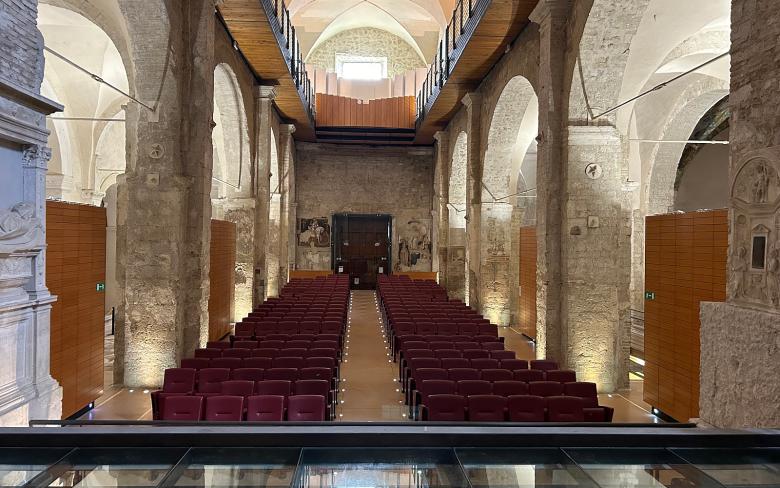Construction on the fort began in 1367 on top of what was once a military settlement built by Federico Barbarossa. Just four years later, in 1371, Pietro, or perhaps Giovanni, di Nevico moved in as the first castellano. Work was completed in 1378. Several architects worked on the project, and historians presume that Ugolino I di Montemarte and Matteo Gattapone, who worked on several buildings being built by Cardinal Albornoz, were among them.
Between 1370 and 1449 the fortress was home to popes, cardinals and generals, its fate linked closely to theirs. In 1449 the plague forced Niccolò V to move in and he embarked a series of projects to enlarge its defensive structures. These projects were continued under Pope Sisto IV and then Innocence VIII until the end of the 15th century.
The fortress resisted numerous assaults and was governed by a long series of castellani until 1798 when, after Rome declared itself a Republic and Pius VI fled, French troops stripped the fortress of its weapons and took away its canons.
In the 19th century it was used as a prison and in 1906 it was bought for pittance by the Russian prince Mestschezsy. In 1972 it was purchased by a Roman family and is now owned by the City of Narni and the Province of Terni.
Cardinal Egidio De Albornoz (Cuenca, 1299 - Viterbo 1367), papal legate and vicar, worked to strengthen the power of the Church all over the papal state. He had castles and forts built everywhere he could - often designing them himself - to serve as a symbol of the power of the Church.
You can walk up Via del Monte to the complex, or drive up over the Flaminia towards Rome and then turn left.
The fortress still represents a royal window overlooking the Middle Ages of Narni. Through guided tours it is possible to enter one of the most evocative environments of the territory.
On the main floor, the thematic layout accompanies visitors through the fascinating medieval world; here, in fact, it is possible to admire reconstructions that represent a focus on the life of the fourteenth century.
You can access the two main historical emergencies of the Narni Municipality - the Albornoz fortress and the Museum of the city and territory of Narni in Palazzo Eroli - with a single ticket.
INFORMATION
Address
Via Feronia, 05035 Narni TR
Opening hours
Opening April 29
Tuesday through Friday
10.00-13.30 / 14.30-19.00
Saturday and Sunday
10.30 / 19.00
Contact
www.archeoares.it/musei/narni/
narni@archeoares.it
800266300 (free of charge)
351 2385302































.png/bfc70537-6645-2c6e-3498-5d0e7556e240?width=780)
